This post contains affiliate links.
Adding air to your RV’s tires should be straight forward but when you are faced with dual tires, also known as dually tires or duallies, it can seem a little more complicated. There are a few different ways that you can go about adding air to your dual RV tires, and the best one is going to be the one that you are most comfortable with but some ways are definitely easier than others.
To inflate dually tires, access the inner valve stem (with or without an extender), attach the chuck to the valve stem and use an air compressor with a high PSI rating to fill the tires.
RV tires are expensive, and nothing puts a damper on a trip like a blowout. Properly inflating your RV’s tires is going to help extend the life of your tires and keep your trip rolling smoothly. I’ve got a couple of tips and tricks that will make the process of properly inflating your duallies easier.
Table of Contents
Adding air to the outside tire is easy – you just remove the stem cap, attach the air hose and chuck to the valve stem, fill the tire while checking the pressure, then replace the stem cap. Inflating the inside tire is when it gets fun.
One of the biggest challenges that comes with filling dually tires is accessing the inner wheel’s valve stem. If your dual rims are properly aligned then you won’t have as much trouble reaching it. If you’re like 99% of RV owners, your dual rims won’t seem to be properly aligned.
You can fix this by taking off the outside tire to reposition it so that the inner valve stem comes through the cutouts in the rim. Once your inner valve stem is at least accessible you’ll be able to fill it in the future without taking off the outside tire.
Fix It Yourself is a self-guided online course where certified RV tech Ed Wilcox walks you through all the steps you need to know to properly maintain your rig and fix problems when they come up. Check it out HERE!
Check it out HERE!
You can either use a personal air compressor or an air pump at a gas station, truck stop, etc to fill your tires, but if you do decide to use your air compressor you have to make sure it has a high enough PSI to get the job done. Dually tires typically should be filled to 80 PSI, and not all air compressors will be able to reach that pressure.
To use your compressor you’ll want to get a pressure gauge that’s long enough to reach the valve stem, which means you’ll need about a 12-inch hose without a valve stem extension installed.
The pressure gauge will let you keep an eye on the tire’s PSI as you’re filling to make sure that it doesn’t get under- or overinflated. You can monitor the pressure by just placing the pressure gauge onto the valve stem without pumping any air into the tire.
Sale
AstroAI Digital Tire Inflator with Pressure Gauge, 250 PSI Air Chuck and Compressor Accessories. 2; Includes an inflator, straight locking...
2; Includes an inflator, straight locking...
If a tire is under-filled it will cause more wear and tear on the tire, not to mention it can make your RV more prone to tipping over which is definitely something you do not want to deal with. If your tire is overfilled, you increase the likelihood of a blowout and you also decrease your tire’s lifespan.
In order to fill the tire, you can try using an angled inflator chuck to better reach the valve stem and you can also find them in different lengths. It may take some playing around with different chucks to find the one that works best for your RV. You can also try getting a valve stem extension with different angles like 90 degrees, 120 degrees, etc.
Once you have your air compressor hooked up, squeeze the trigger/lever on the compressor hose to pump air into the tire and release the lever to see what the tire’s current PSI is.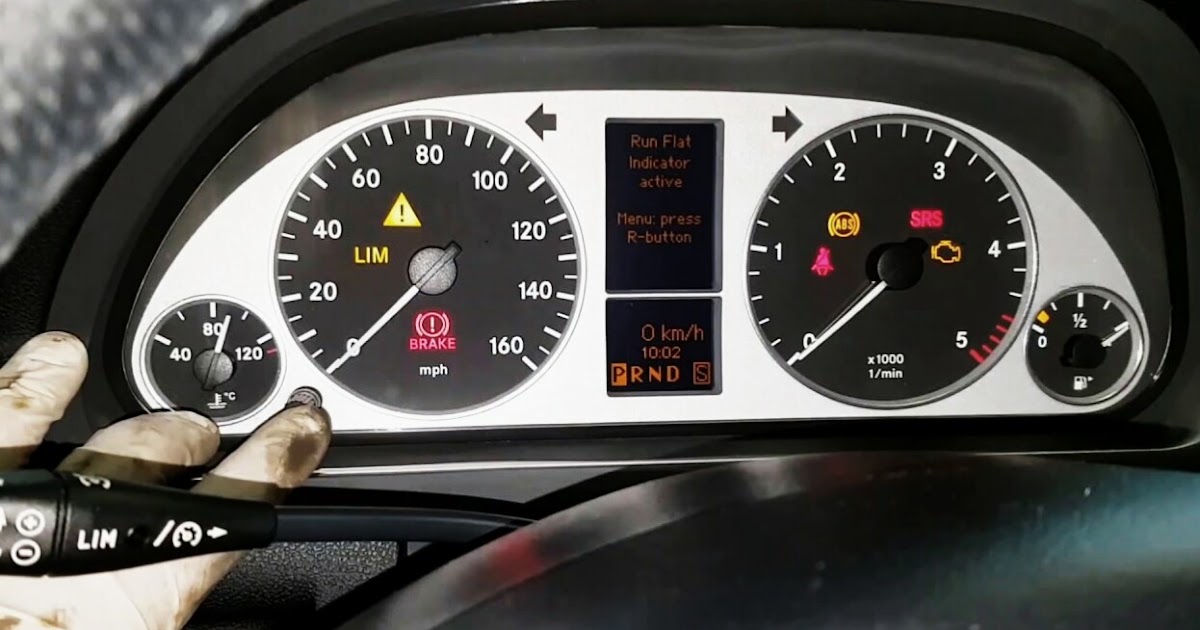
A valve stem extender is exactly what it sounds like – a part that you can install to extend the length of your valve stem. Most of them are made of stainless steel and they attach directly to the tire stem, and you can leave them installed so that you’re all set for next time.
Sounds great, right? No more cramped spaces, no more fumbling for the valve stem, no more hassle.
While that may sound like the best thing in the universe (especially if you’re already an hour into trying to check your dually tire pressures), most RV forums are actually pretty divided on how well they work and especially how safe they are for your RV.
Some people argue that they’re just as hard if not harder to install than just putting the chuck on the stem, and other people have had bad experiences with them leaking if left on for long periods. Still other people have reported the inside of the valve stem, which is rubber, deteriorating despite the stainless steel exterior.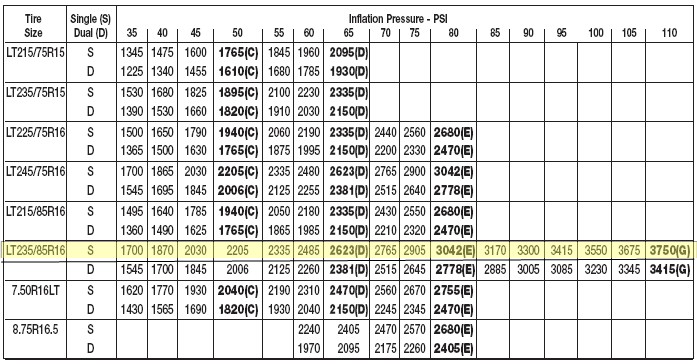
On the other side of the coin many people swear by them, saying they have never had a problem and their valve stem extenders make the dually filling process so much easier.
Some newer and higher-end RVs will come with extenders already installed, which is awesome. If that’s the case then you can use them until you have to replace the tires and then look at replacing the extenders at the same time.
There are many valve extender kits that have good reviews and are recommended on the RV forums, but everyone seems to agree that you should avoid the airless stem extenders. One person reported losing two perfectly good tires in less than a year thanks to leaks from the airless extenders.
CKAuto 6 Pack 45 Degree 90 Degree 135 Degree Metal Valve Stem Extenders, Universal Valve Stem...
 ..
..This is an equalizing valve that allows air to flow freely from one tire to the other, allowing both tires to be at equal pressure. I know what you’re thinking – I just checked the tire pressures and they’re both the same. Why would I need something like this?
While the tires will be at the same pressure after you fill them, on the road is a different story. The inside tire is going to heat up more due to lower airflow and the in-board brakes, and this higher temperature is going to cause the pressure in your inside tire to rise as you travel.
As I mentioned, too-high of pressure can leave you prone to a blowout and put more wear on your tire, so the tire equalization valve seeks to remove that risk.
Products like the Crossfire Dual Tire Pressure Equalization System show you if your tires are properly inflated while allowing the higher pressure in the inside tire to equalize with the outside one. This will add to your tires’ overall life expectancy and hopefully save you money in the long run.
Sale
Crossfire Dual Tire Pressure Equalization System, 110 PSI, one per pkg. (CF110STABT)
Did you know that a tire being 20% under inflated will cause at least a 30% loss in the life expectancy of your tire? Similarly, a tire being 20% overinflated will cause at least a 10% loss in your tire’s life expectancy while increasing the risk of a dangerous situation.
You should check your dually tire pressure before setting out on every trip, and when you fill up for gas while on your trips.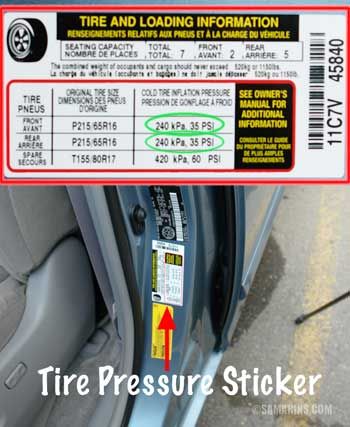 It’s especially important to check if your RV has been sitting still for a while, as dry rot can cause leaks and other issues.
It’s especially important to check if your RV has been sitting still for a while, as dry rot can cause leaks and other issues.
Generally, your RV’s dual tires should be at 80 PSI, and to check the pressure you’ll need to make sure the tire pressure gauge is rated high enough so that you get an accurate measurement. A pressure gauge that is too low will max out without telling you if you’re actually at 80, and one that is too high may not give you an accurate reading.
But before you go and just fill your tires to 80 psi you’ll want to check the owner’s manual of you RV or the placard stating the tire pressure rating for your RVs tires. You should also check on the tire itself what the rating is.
The rating found on the sidewall of the tire will actually state “maximum load-carrying capacity and the minimum air pressure required to carry this load”. This means it’s a good idea to know what your RV actually weighs for each axle when you are fully loaded for a trip, including all passengers.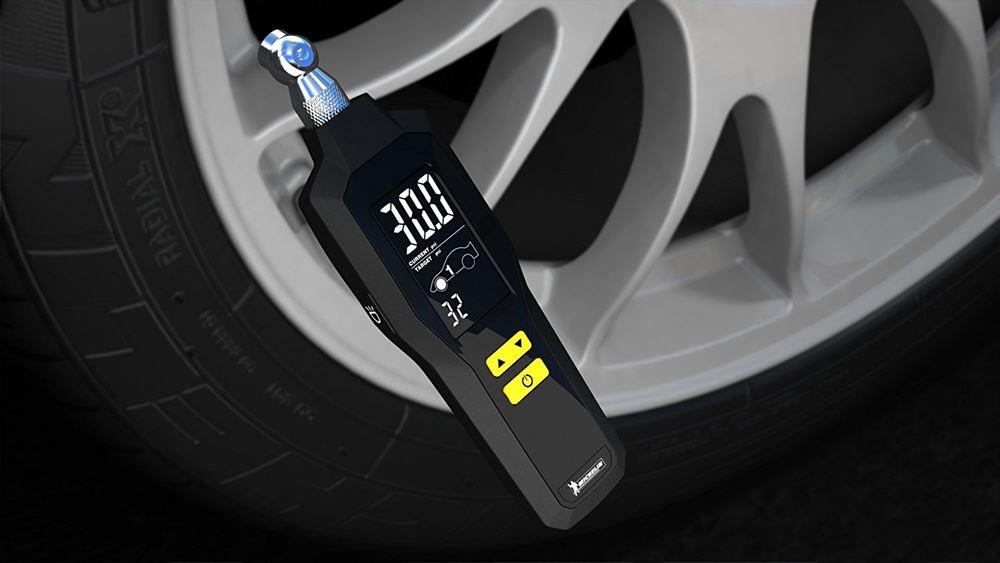
Tire pressure should also be checked when cold. This is because when you start driving your tires warm up, increasing the air pressure in your tire. Any manufacturer rating from both the tire and RV will be for a cold tire.
A tire pressure monitoring system is exactly what it sounds like – a way to monitor the air pressure of your tires in real time. This is done through the electronic system that sends periodic reports to the main console and will also alert you of any potential issues.
A sensor is mounted in each wheel or as part of your anti-lock braking system (depending on the model), and these sensors are what monitors your tire pressure,
These systems are fairly pricey up front, but they will save you a lot of money and time on the back end by allowing you to keep your tires inflated at the ideal pressure and therefore reducing the wear and tear on them.
Some monitoring systems will only track pressure while others will also give you information about temperature. The EEZTire-TPMS6 system will give you real-time updates about both while also providing audio and visual alerts to any problems, and it’s one of the highest-reviewed monitoring systems on the market.
The EEZTire-TPMS6 system will give you real-time updates about both while also providing audio and visual alerts to any problems, and it’s one of the highest-reviewed monitoring systems on the market.
EEZ RV Products EEZTire-TPMS6ATC Real Time/24x7 Tire Pressure Monitoring System - Color Monitor + 6...
The most costly parts of RV ownership are repairs and maintenance. That’s why I recommend learning to do your own RV repair and maintenance.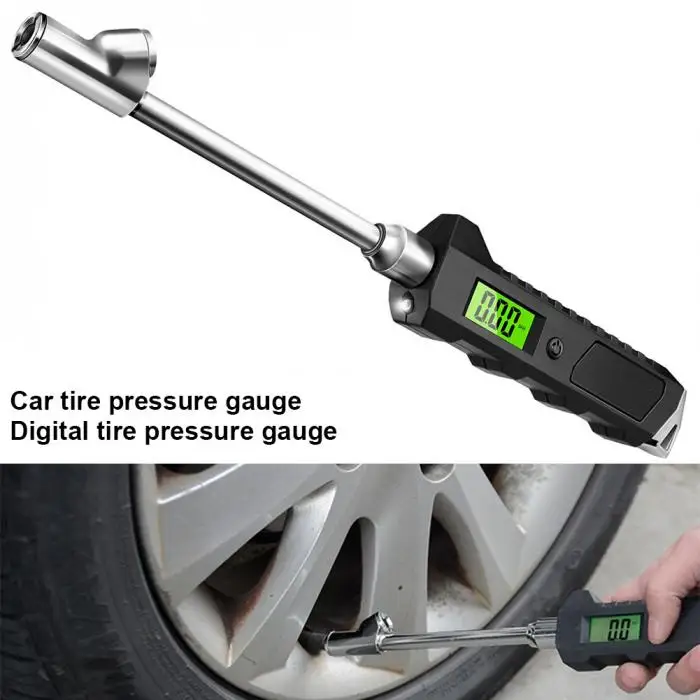
The Fix It Yourself RV Maintenance Course is the perfect way to learn how to do the most common repairs and maintenance on your RV. A Certified RV Technician wrote and filmed the course so you know the information is actually correct.
Plus it’s downloadable so you can access it from anywhere, even when boondocking in the middle of nowhere with no service.
Find out more about the best RV Maintenance and Repair Course available!
Learn to Fix Your RV Yourself
Closing ThoughtsNow you know how to inflate dual RV tires and why it’s important, and hopefully, you’ll be more confident the next time you get ready for a trip. Just remember to use a compressor with a high enough PSI, choose your valve stem extender wisely, and don’t be afraid to take the outside tire off in order to get the inner valve stem positioned where it’s supposed to be.
| Preview | Product | |
|---|---|---|
EEZ RV Products EEZTire-TPMS6ATC Real Time/24x7 Tire Pressure Monitoring System - Color Monitor +. .. .. | Check Latest Deals | |
| Crossfire Dual Tire Pressure Equalization System, 110 PSI, one per pkg. (CF110STABT) | Check Latest Deals | |
CKAuto 6 Pack 45 Degree 90 Degree 135 Degree Metal Valve Stem Extenders, Universal Valve Stem.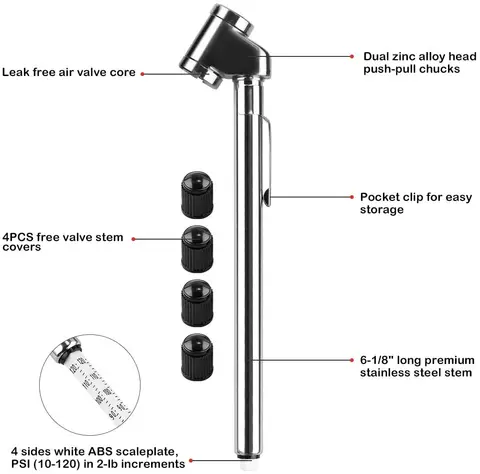 .. .. | Check Latest Deals | |
| AstroAI Digital Tire Inflator with Pressure Gauge, 250 PSI Air Chuck and Compressor Accessories... | Check Latest Deals | |
GSPSCN Silver Dual Cylinder 12V Air Compressor Pump for Car, Heavy Duty Portable Tire Inflator.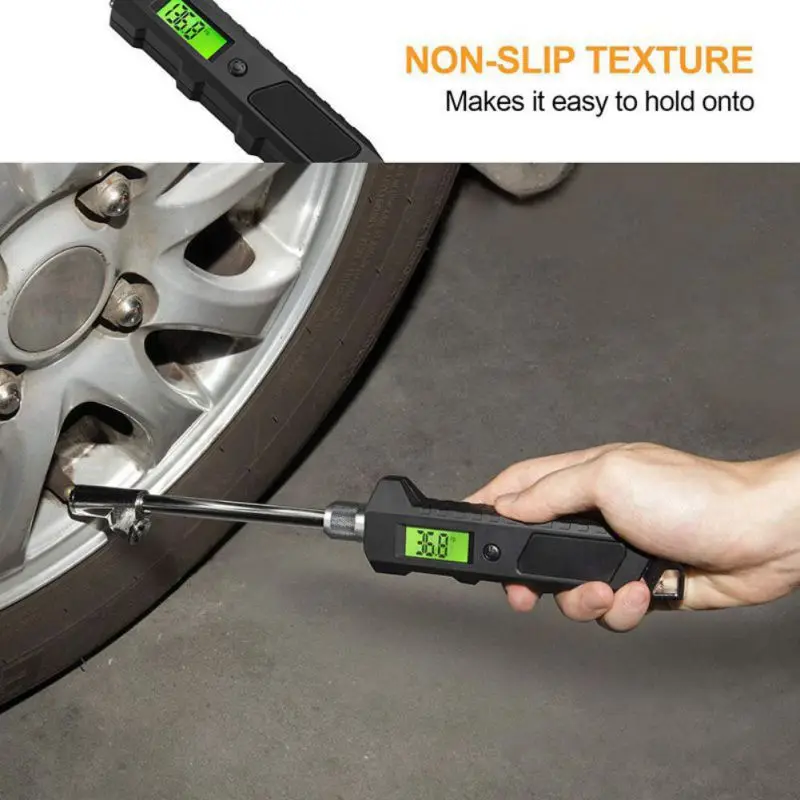 .. .. | Check Latest Deals |
A trip can be fun, or it can be frustrating, depending on the state of your tires. When your tires are properly inflated, you will have a safe and comfortable trip. If they are not, you could encounter major problems, such as a blowout on the road. Dual RV tires add an extra wrinkle to your tire maintenance.
If a tire is underinflated even as low as 20%, it reduces its lifespan by 30%. Likewise, if it is overinflated in the same percentage, there is a 10% decrease in the tire’s life expectancy. Moreover, there is an increase in the chances of something going wrong along the way.
Inflating an RV tire is simple, or at least it should be. But with dual RV tires, it becomes a little more complicated. This article will provide a detailed step-by-step guide on how to inflate dual RV tires.
A vehicle having dual RV tires means there are two tires side by side. Dual tires are usually located at the rear of a vehicle. Generally, dual RV tires are more common with Class A and Class C motorhomes.
Dual tires have their benefits, as each tire helps share the load with the other. As such, overloading is less likely. Another benefit is that it improves braking compared to a single-rear-wheeled vehicle. But beyond stability, dual tires are beneficial when one gets damaged. The undamaged tire helps maintain some control until the vehicle can stop and the other tire is fixed.
Step 1: Get an air compressor. The air compressor should be one with a high enough PSI rating. Dual RV tires are typically required to be filled to as high as 120 PSI. However, not all air compressors can go that high. If you decide to use an air compressor, make sure it can reach at least 120 PSI.
Step 2: Get a pressure gauge. You will need a pressure gauge long enough to reach the valve stem to use the air compressor. The pressure gauge helps you keep an eye on the tire’s PSI to ensure you don’t underinflate or overinflate.
Step 3: Inflate the outside tire. Detach the stem cap, attach the air hose and chuck to the valve system, and add air to the tire. Remember to check the tire pressure while inflating the tire. Then, replace the stem cap.
Step 4: Access the inner wheel’s valve stem. To fill your dual RV tire, you must reach the inner valve stem. An angled inflator chuck helps you reach the valve better. Inflator chucks also come in different lengths. However, you may have to do a few trials to know the one that works. Alternatively, you can consider getting a valve stem extension that has multiple angles.
Step 5: Attach the inflator chuck to the valve stem of the tire. Hook the valve stem with the air compressor.
Hook the valve stem with the air compressor.
Step 6: Fill the inner tire with the air compressor. The next step is to squeeze the lever on the compressor hose and pump air into the tire. Release the lever and check the current PSI rating of the tire. Keep doing this until you reach the required pressure. Go slowly and steadily because while you want to reach the expected rating, you don’t want to go above. Underinflated tires will overheat and pose greater risk of an accident. Overinflated tires will decrease in the tire’s lifespan and cause a rougher ride. Both scenarios can cause premature tire failure.
Step 7: Replace the stem cap. When replacing, tighten the cap moderately to prevent the cap from cracking.
You may encounter some challenges while inflating your dual RV tires.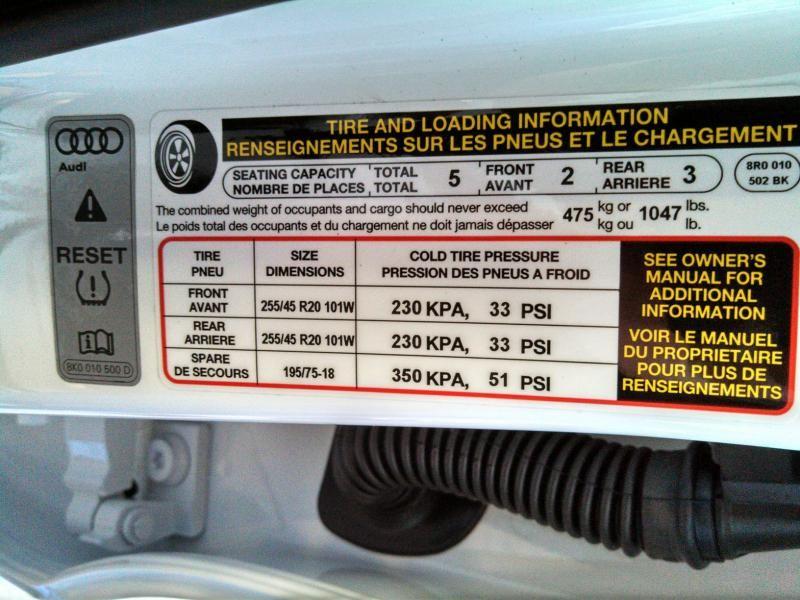 The most common problem is accessing the inner wheel’s valve stem. If your dual rims are properly aligned, reaching the inner stem shouldn’t be difficult. In addition to misaligned rims, you may have valve stems that are too short or missing the extender.
The most common problem is accessing the inner wheel’s valve stem. If your dual rims are properly aligned, reaching the inner stem shouldn’t be difficult. In addition to misaligned rims, you may have valve stems that are too short or missing the extender.
Another issue is the protective rubber saddle that keeps the valve stem centered in the outer wheel is missing or worn. This causes the stem to wear on the edge of the outer wheel.
Semi-trucks and large buses or motorhomes may utilize a tire pressure equalization system, which ensures both tires are at equal pressure. You typically don’t see these on RVs, but high-end motorcoaches might be a good candidate for them.
Either way, it’s important that both tires in a dual pair be set to the same pressure.
As always, check your owner’s manual to know the required pressure rating for your RV tires. Check the tire to know its pressure rating. The pressure ratings are usually located on the sidewall of the tire, however, it’s best to weigh your RV and set tire pressure according to load charts for your tire manufacturer, based on the weights taken.
Check the tire to know its pressure rating. The pressure ratings are usually located on the sidewall of the tire, however, it’s best to weigh your RV and set tire pressure according to load charts for your tire manufacturer, based on the weights taken.
Check your dual RV tires:
Dual RV tires add only a few extra considerations to your regular tire maintenance. Ensure they are equally pressured and the inner valve stem is in good shape, and you should be fine. Also consider a good tire pressure monitoring system for constant tire pressure monitoring.
Make sure you keep track of all your RV maintenance and repairs with an online tool such as RV LIFE Maintenance. Not only can you keep all of your documents in one place, but you’ll also receive timely reminders when maintenance is due to help you avoid costly repairs and potentially serious accidents.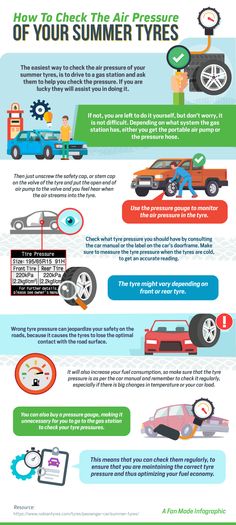
Mark Johnson is the Founder and Editor In Chief of tiresglobe.com.
As repeatedly stated, regular maintenance not only improves mileage, but also increases reliability. Of all the maintenance methods, the most important for us is regular tire pressure checks. The optimum pressure (recommended by the manufacturer) is equal to the optimum return during operation.
Do you know that pressure depends on temperature changes and climatic conditions? Yes, it is - it changes in warm and cold weather. What do we remember from the school physics course? The fact that when heated, the gas expands and increases in volume. And at low temperatures, the gas is compressed. The same process takes place inside your wheels. In countries where the temperature changes significantly throughout the day, it is very important to pay attention to pressure.
It has been scientifically proven that the internal pressure changes by 3-4% for every 10°C change in temperature. Simply put:
Simply put:
So, that's sorted out. We go further.
Not only the outside air temperature should be taken into account when checking and pumping. There is also the heat generated by the tire itself, which also leads to a change in pressure.
The crux of the matter is... how does this affect performance?
Imagine this situation: your mechanic checks the tires, and the pressure is normal - exactly according to the manufacturer's recommendations. Everything is fine. Then (shortly after the pressure test) the ambient temperature rises significantly (this happens in many parts of the world). Plus, the tires warmed up from work. The combination of these two factors leads to a significant increase in pressure and negatively affects performance.
Always remember that excessive pressure leads to intense and uneven wear - this is the number one enemy in the operation of the wheels.
The same principle works in the opposite direction: the outside temperature drops sharply (during harsh winters, for example) or when operating on snow or ice. The clutch drops, maneuverability and grip deteriorate, the carcass deteriorates, and fuel consumption increases.
Is there a way to control the situation and how to prevent pressure surges? We strongly recommend that you carefully follow the manufacturer's recommendations. Remember that the nominal pressure must be checked in the morning - when the vehicle has not yet been used and the tires have not warmed up.
But if suddenly the outside temperature changes significantly (hard frost or heat), you should deviate slightly from the recommended pressure - in order to avoid potential problems. But try to do it yourself. Always check with a tire specialist beforehand. He will take into account the features of the vehicle, operating mode, temperature and climate, and only then will he give a recommendation for “fine tuning” of the pressure.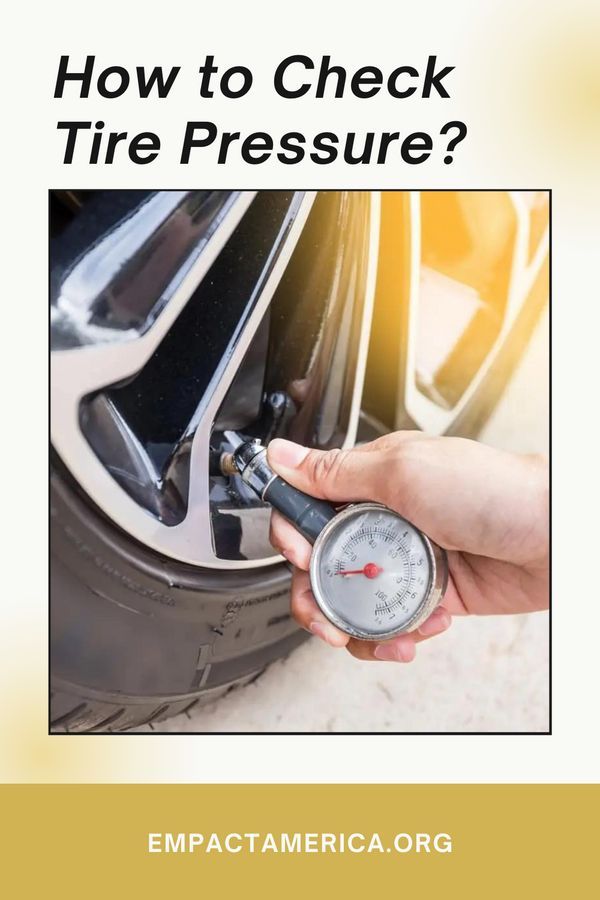 Remember, if you have any questions about tire pressure, don't hesitate to ask a tire specialist for advice.
Remember, if you have any questions about tire pressure, don't hesitate to ask a tire specialist for advice.
BKT Information
Tire pressure significantly affects driving parameters: comfort, car handling, economy and safety. It is important to maintain the pressure recommended by the manufacturer and check it regularly. Let's figure out how to do it right.
When driving on asphalt, incorrect tire pressure (both high and low) leads to a decrease in the contact patch with the road. An overinflated wheel clings to the surface only in the central part, which leads to its rapid wear. A poorly inflated tire, on the contrary, "sits" on the sidewalls, leaning on the shoulder areas of the tread and pushing the central part inward. Here's what it looks like:
Both under-inflation and over-inflation in tires create many problems for the driver.
1. Increased wear on the central part of the tire tread.
Increased wear on the central part of the tire tread.
2. Reduced ride comfort, hardness of potholes and road bumps.
3. Increased load on the vehicle suspension due to reduced damping effect of the tire.
4. Risk of tire damage and herniation due to shock loading (getting into a pit or pothole).
5. Reduced control stability due to reduced contact patch.
1. Increased wear of the tread sidewalls (shoulder areas).
2. Severe deformation of the rubber when driving over bumps, which increases the risk of tire damage.
3. An increase in tire temperature, which threatens to delamination of the carcass and can lead to tire explosion at high speed.
4. Increased risk of hydroplaning on wet roads.
5. Risk of tire breaking.
6. Increased fuel consumption.
Reduced pressure hits the driver's pocket hard: a pressure drop of 20% (which is not uncommon: it is enough, for example, to deflate the wheels to 1.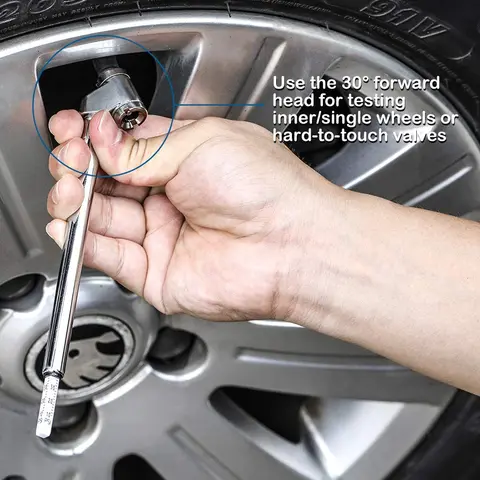 8 atmospheres instead of the manufacturer's prescribed 2.2) reduces tire life by 25-30% and increases fuel consumption fuel by 3%.
8 atmospheres instead of the manufacturer's prescribed 2.2) reduces tire life by 25-30% and increases fuel consumption fuel by 3%.
There is no universal tire pressure: it depends on the size of the tires, the characteristics of the car (primarily weight) and road conditions. Therefore, it is important to follow the factory recommendations, maintaining exactly the tire pressure that the engineers expected when designing the car.
The recommended pressure for your machine can be found in the operating instructions and on the sticker in the door frame. If, depending on the configuration, tires of several dimensions were installed on the car, then the pressure recommended for them may differ - look in the table for your exact wheel size. The manufacturer may prescribe an increase in tire pressure at the maximum load of the machine. For the spare tire (Spare tire), the required pressure is also indicated on a separate line - note that it is much higher than the standard one.
So, you have found the necessary pressure parameters, it remains to decipher them. In physics, pressure is measured in pascals, in real life - in anything: in bars, atmospheres, pounds-force, kilogram-force ... Drivers and tire workers usually use the term atmosphere, but such a unit is often absent on pressure gauges (pressure measuring devices) . Let's clear up this confusion.
Atmosphere is a non-systemic unit of measurement, approximately equal to atmospheric pressure on the surface of the Earth. Since it has become widely used, it was necessary to somehow equate it with correct physical units. For simplicity, one atmosphere is considered equal to one bar, one kilogram-force and one hundred kilopascals.
In addition to the technical atmosphere (at), there is also the physical atmosphere (atm), which is slightly larger. Again, for convenience, they are considered equal. But all these assumptions introduce an error, so if you need accurate tire pressure, measure it correctly - in pascals or bars.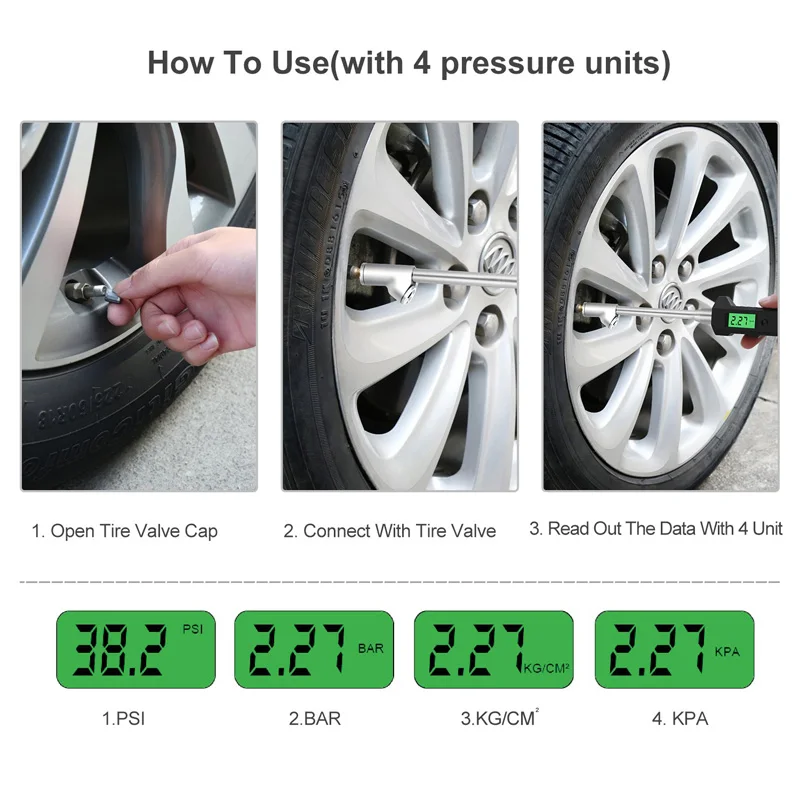 Moreover, manufacturers usually indicate the pressure in these quantities.
Moreover, manufacturers usually indicate the pressure in these quantities.
Imperial pounds-force (aka PSI, “psy”), popular in the USA, is more difficult to translate, here you can’t do without a calculator. In the table, we have collected together all pressure units with exact values, and also approximately brought them to each other to simplify calculations:
| Pressure units | |||||
| Pascal | Bar | Technical atmosphere | Physical atmosphere | PSI | |
| 1 Pa | 1 N/m² | 10-5 | 10. | 9.8692•10-6 | 145.04•10-6 |
| 1 bar | 105 | 1x106 dynes/cm² | 1.0197 | 0.98692 | 14.504 |
| 1 at | 98066.5 | 0.980665 | 1 kgf/cm² | 0.96784 | 14.223 |
| 1 bar | 101325 | 1.01325 | 1.033 | 1 bar | 14. |
| 1psi | 6894.76 | 68.948•10-3 | 70.307•10-3 | 68.046•10-3 | 1lbf/in² |
It is advisable to check tire pressure daily, before driving. But this is only possible with a very measured rhythm of life. In reality, checking at least once a month is already an excellent indicator for the average driver. But before traveling a long distance, checking the pressure and visual inspection of tires and rims should be done in any case.
It is necessary to measure the pressure in cold tires, that is, before driving. During driving, the tires heat up, which increases the pressure by about 10%. Therefore, never release supposedly excess air from hot tires: after cooling, the pressure will be below normal. If you had to inflate a hot tire during a trip, inflate it 10% more than the nominal value, and check the pressure again when the wheels have cooled down - no earlier than 3 hours after stopping.
If you had to inflate a hot tire during a trip, inflate it 10% more than the nominal value, and check the pressure again when the wheels have cooled down - no earlier than 3 hours after stopping.
Always check the pressure in all tires. Different tire pressures seriously affect handling and can cause the car to pull to the side. Do not forget about the "spare tire": it should always be inflated in case of an unexpected wheel change on the road.
For long-term driving at high speeds (over 160 km/h), car manufacturers advise increasing tire pressure by 0.2-0.4 bar above the recommended value. This will slightly improve the handling of the car, although it will negatively affect comfort. But such advice is relevant for driving on high-speed autobahns, and not for everyday urban use, especially in Russia.
Before a long trip on a dirt road or a road with a muddy surface (mud, snow), it is reasonable, on the contrary, to reduce the pressure in the tires - this will improve the grip. In summer, it is worth limiting yourself to reducing pressure by 5-10% of the nominal value, and in winter - by 10-15%.
In summer, it is worth limiting yourself to reducing pressure by 5-10% of the nominal value, and in winter - by 10-15%.
The pressure in low-profile tires (especially non-standard sizes) must be monitored especially carefully. Low profile tires have two features: a low sidewall (profile) height and a large rim diameter. If the tire has the correct air pressure, only the tread is in contact with the road. Low pressure causes the sidewall of the tire to bend, causing it to touch the roadway and wear out quickly, up to complete abrasion. And punching a low-profile tire in a pit at low pressure is much easier.
When inflating low profile tires, you need to focus on the pressure indicated for a full load of the machine and the maximum allowable pressure for a particular tire. It is indicated on the sidewall, next to the inscription max pressure, in one of the accepted units of measurement: kilopascals (KPA), bars (BAR) or pounds-force (PSI).